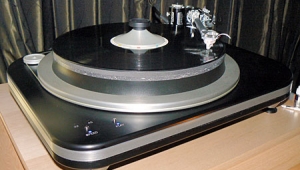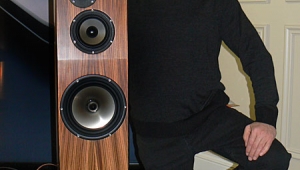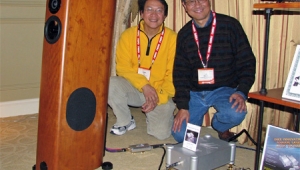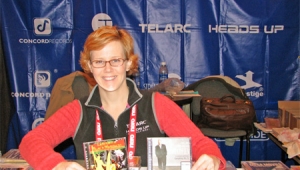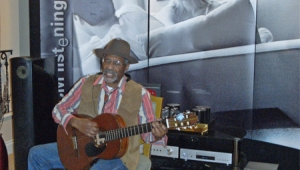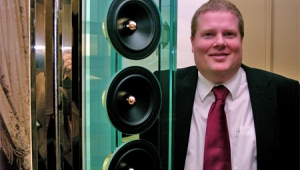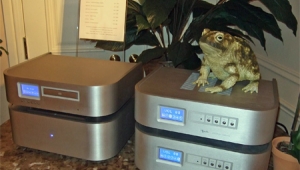| Columns Retired Columns & Blogs |
Thielnet Networks Thiel Speakers

Thiel wondered if such problems could be reduced by connecting speakers through a network, preferably wireless, without sacrificing the audiophile sound quality that has been a design goal of the company. Arrangements were made to partner with BICOM, a software / information technology company. The resulting partnership developed the plan for Thielnet.
The resulting Thielnet system includes a dB1, IP addressable, digital audio distribution processor capable of running up to 64 loudspeakers with DSP to decode Dolby Digital, Dolby Pro Logic II/IIx, and DTS audio inputs. The dB1 can be controlled by a remote, Web browser, or through its front panel.
The Thielnet SCS4D loudspeaker shown in the photo is a key member of this system. This is a full-range, IP-addressable, two-way, powered bookshelf speaker with a digital crossover network, a 6.5" woofer mounted co-axially with a 1" metal-dome tweeter. This is the only loudspeaker I've seen that includes an Ethernet jack and WiFi antennae on its rear panel.
Also presented was the Thielnet SS1D SmartSub subwoofer which has a 10" long-throw woofer; and a dS1-Thielnet IP based digital speaker module that contains the 250W class-D monoblock amplifier, a 24-bit/192kHz DAC, and traditional binding-post speaker outputs. Connectivity between the digital audio distributor processor and powered loudspeakers can be accomplished with Ethernet cabling or wirelessly.
Ekin Binal spent time detailing the flexibility and rear panel connectivity of the dB1, particularly its eight Ethernet jacks. Later, members of the audience asked Jim Thiel, the company's main speaker designer, how the networked connections sounded compared to the traditional speaker cabling. Jim stated that speaker cabling was superior at this time, but the difference was slight, and could not be detected most times. Others asked abou the absence of an HDMI connector, and what were the sources Thiel uses for its DACs and DSP modules.
- Log in or register to post comments


